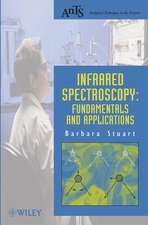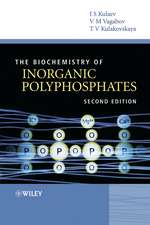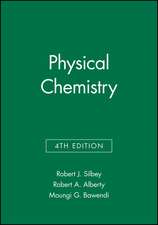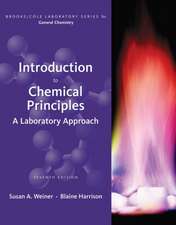Chemistry
Autor Steven S. Zumdahl, Susan A Zumdahlen Limba Engleză Hardback – 31 dec 2012
Preț: 597.62 lei
Preț vechi: 694.90 lei
-14% Nou
Puncte Express: 896
Preț estimativ în valută:
114.39€ • 124.30$ • 96.15£
114.39€ • 124.30$ • 96.15£
Carte disponibilă
Livrare economică 31 martie-14 aprilie
Livrare express 14-20 martie pentru 93.18 lei
Preluare comenzi: 021 569.72.76
Specificații
ISBN-13: 9781133611097
ISBN-10: 1133611095
Pagini: 1170
Dimensiuni: 226 x 277 x 41 mm
Greutate: 2.38 kg
Ediția:9
Editura: THOMSON BROOKS/COLE
ISBN-10: 1133611095
Pagini: 1170
Dimensiuni: 226 x 277 x 41 mm
Greutate: 2.38 kg
Ediția:9
Editura: THOMSON BROOKS/COLE
Notă biografică
Steven S. Zumdahl earned a B.S. in Chemistry from Wheaton College (IL) and a Ph.D. from the University of Illinois, Urbana-Champaign. He has been a faculty member at the University of Colorado-Boulder, Parkland College (IL), and the University of Illinois at Urbana-Champaign (UIUC) where he is Professor Emeritus. He has received numerous awards including the National Catalyst Award for Excellence in Chemical Education, the University of Illinois Teaching Award, the UIUC Liberal Arts and Sciences Award for Excellence in Teaching, UIUC Liberal Arts and Sciences Advising Award, and the School of Chemical Sciences Teaching award (five times). He is the author of several chemistry textbooks. In his leisure time he enjoys traveling and collecting classic cars. Susan L. Zumdahl earned a B.S. and M.A. in Chemistry at California State University-Fullerton. She has taught science and mathematics at all levels including middle school, high school, community college, and university. At the University of Illinois, Urbana-Champaign, she developed a program for increasing the retention of minorities and women in science and engineering. This program focused on using active learning and peer teaching to encourage students to excel in the sciences. She has coordinated and led workshops and programs for science teachers from elementary through college levels. These programs encourage and support active learning and creative techniques for teaching science. For several years she was director of an Institute for Chemical Education (ICE) field center in Southern California, and she has authored several chemistry textbooks. Susan spearheaded the development of a sophisticated Web-based electronic homework system for teaching chemistry. Susan enjoys traveling, classic cars, and gardening in her spare time when she is not playing with her grandchildren.
Cuprins
1. Chemical Foundations. 2. Atoms, Molecules, and Ions. 3. Stoichiometry. 4. Types of Chemical Reactions and Solution Stoichiometry. 5. Gases 6. Thermochemistry. 7. Atomic Structure and Periodicity. 8. Bonding: General Concepts. 9. Covalent Bonding: Orbitals. 10. Liquids and Solids. 11. Properties of Solutions. 12. Chemical Kinetics. 13. Chemical Equilibrium. 14. Acids and Bases. 15. Acid-Base Equilibria. 16. Solubility and Complex Ion Equilibria. 17. Spontaneity, Entropy, and Free Energy. 18. Electrochemistry. 19. The Nucleus: A Chemist's View. 20. The Representative Elements. 21. Transition Metals and Coordination Chemistry. 22. Organic and Biological Molecules. Appendix 1. Mathematical Procedures. A1.1 Exponential Notation. A1.2 Logarithms. A1.3 Graphing Functions. A1.4 Solving Quadratic Equations. A1.5 Uncertainties in Measurements. Appendix 2. The Quantitative Kinetic Molecular Model. Appendix 3. Spectral Analysis. Appendix 4. Selected Thermodynamic Data. Appendix 5. Equilibrium Constants and Reduction Potentials. A5.1 Values of Ka for Some Common Monoprotic Acids. A5.2 Stepwise Dissociation Constants for Several Common Polyprotic Acids. A5.3 Values of Kb for Some Common Weak Bases. A5.4 Ksp Values at 25_C for Common Ionic Solids. A5.5 Standard Reduction Potentials at 25_C (298K) for Many Common Half-Reactions. Appendix 6. SI Units and Conversion Factors. Glossary. Answers to Selected Exercises.






